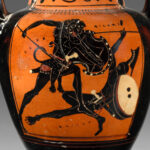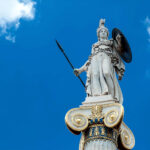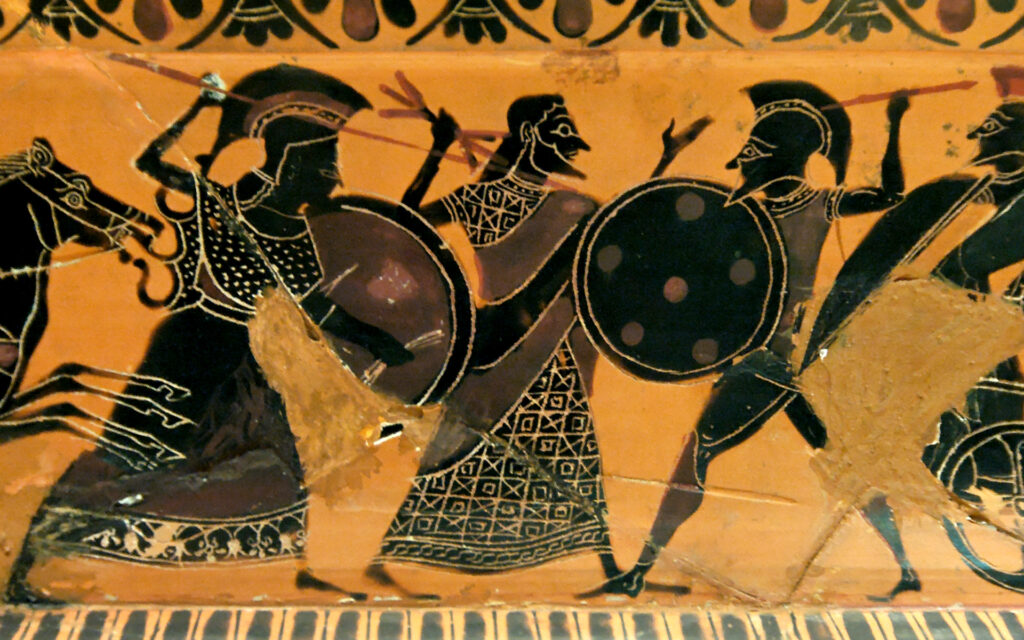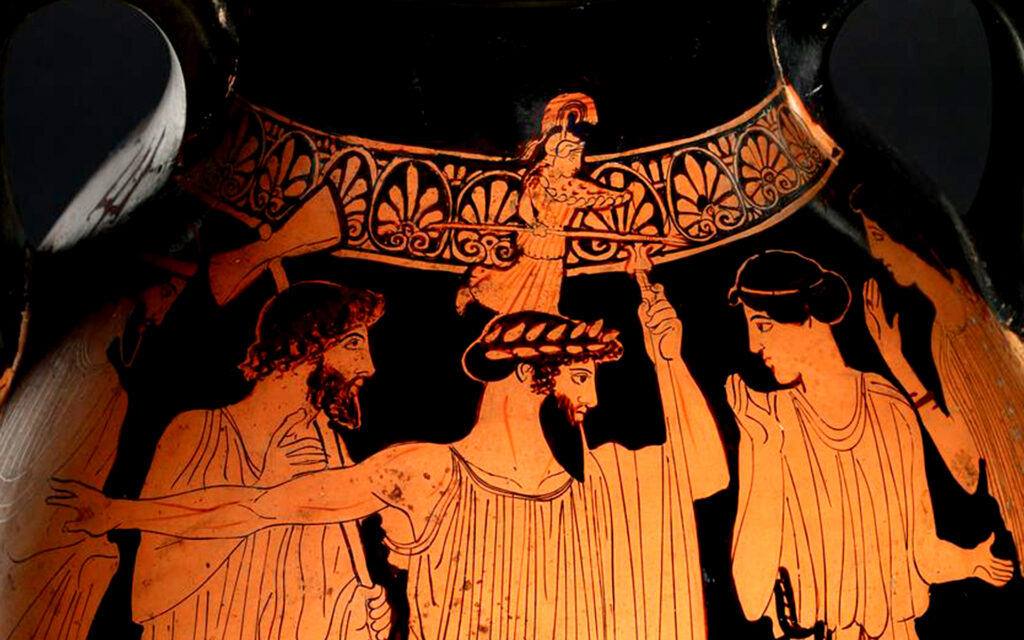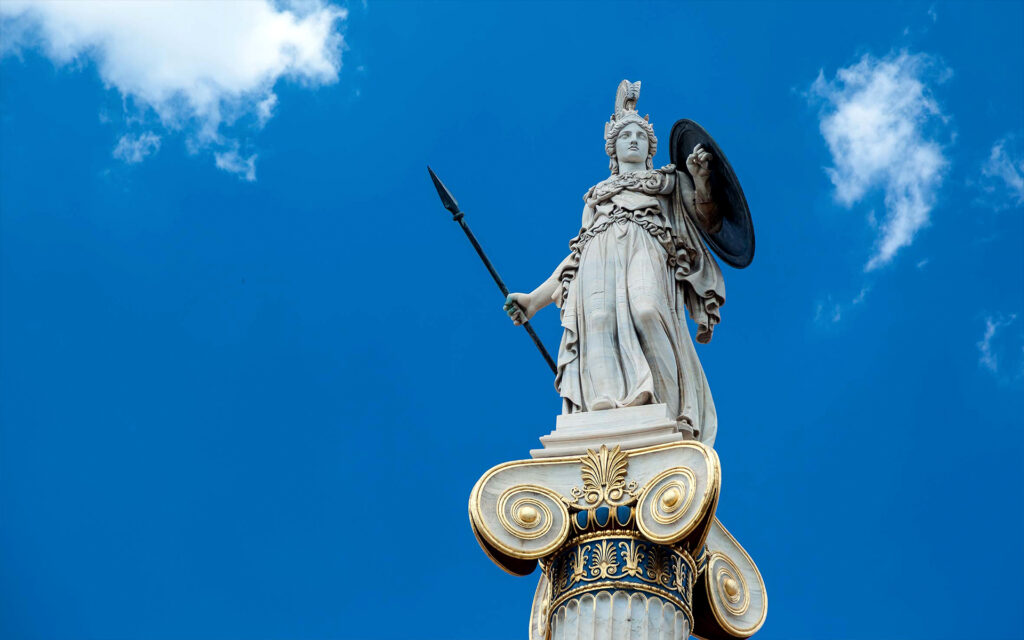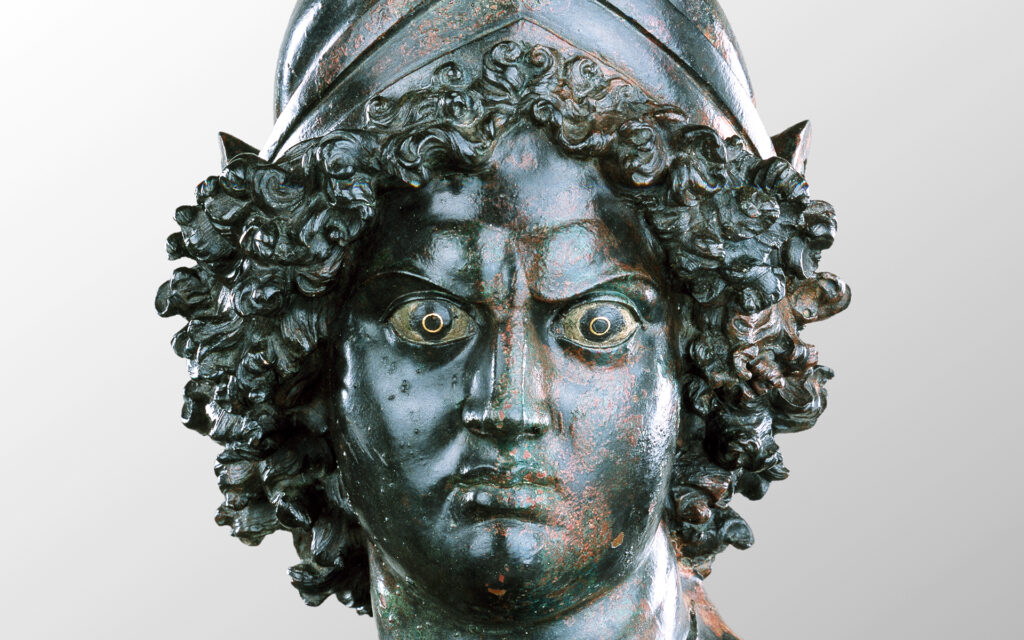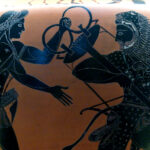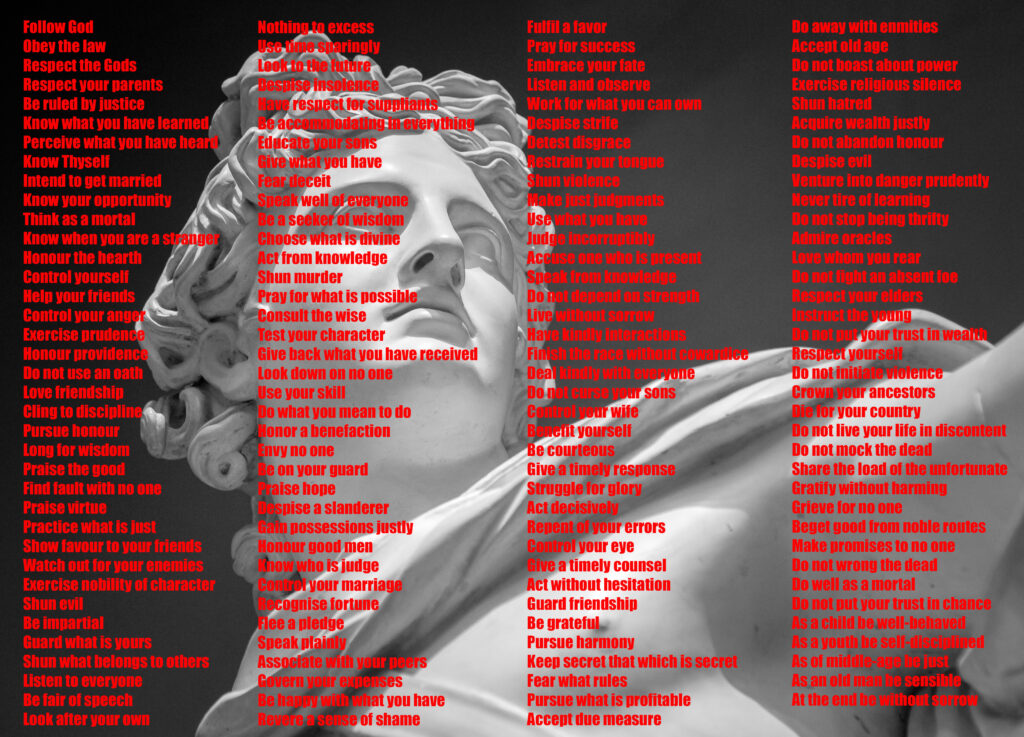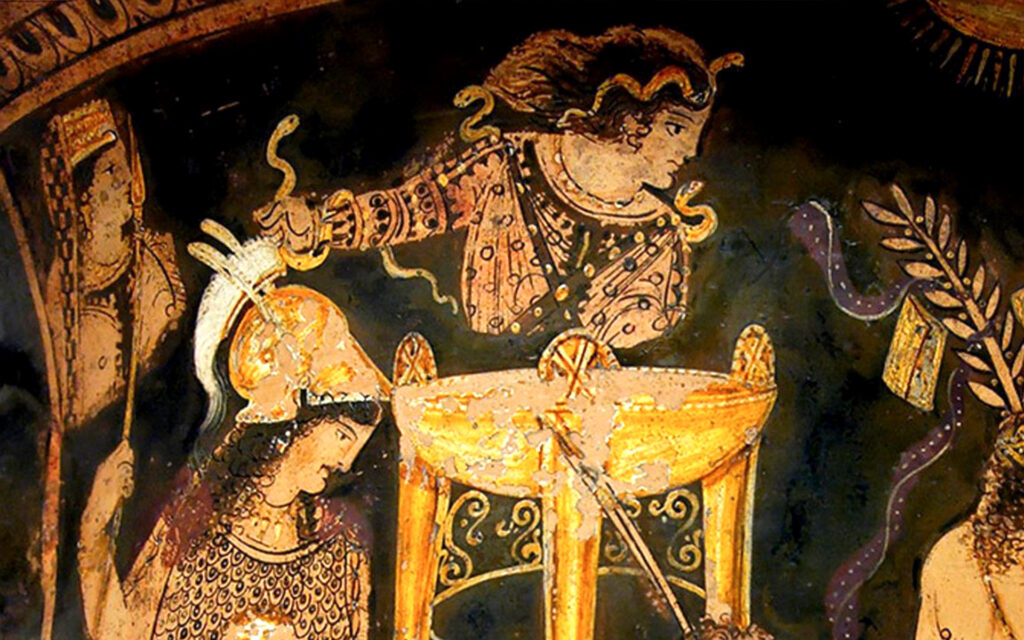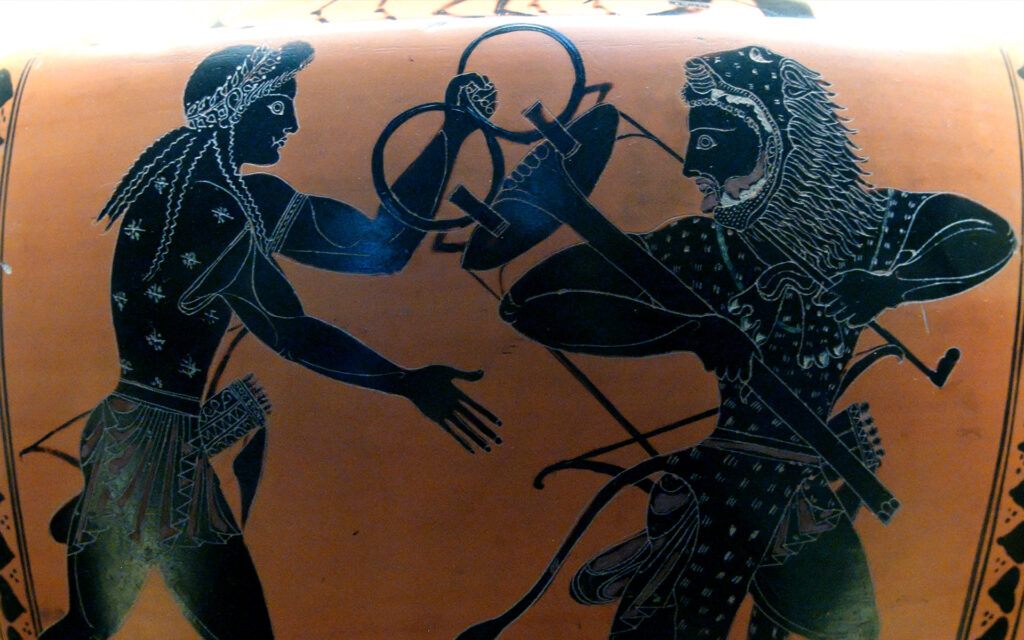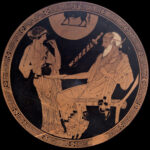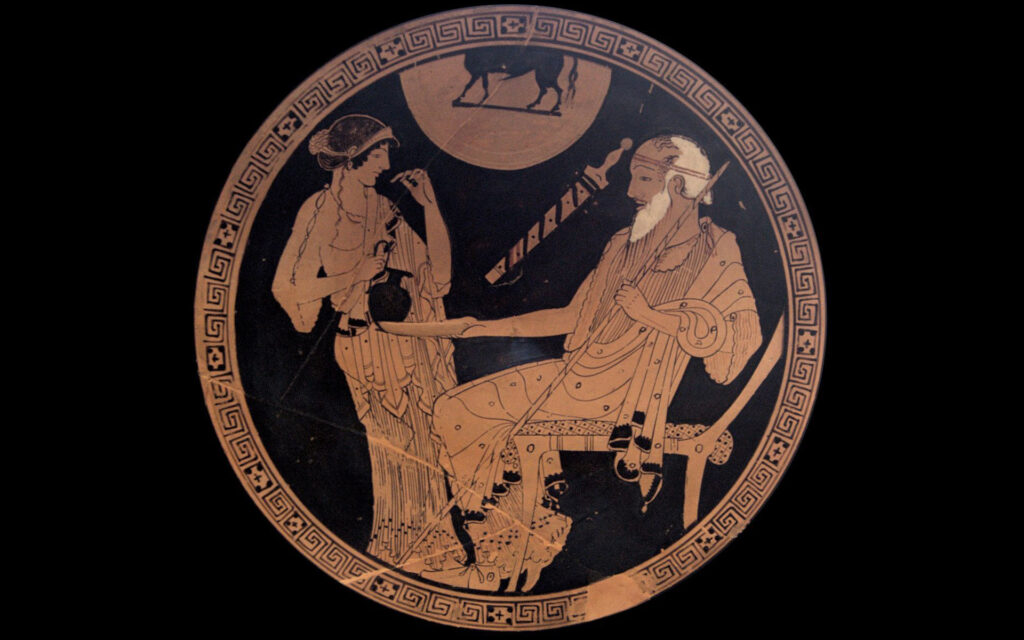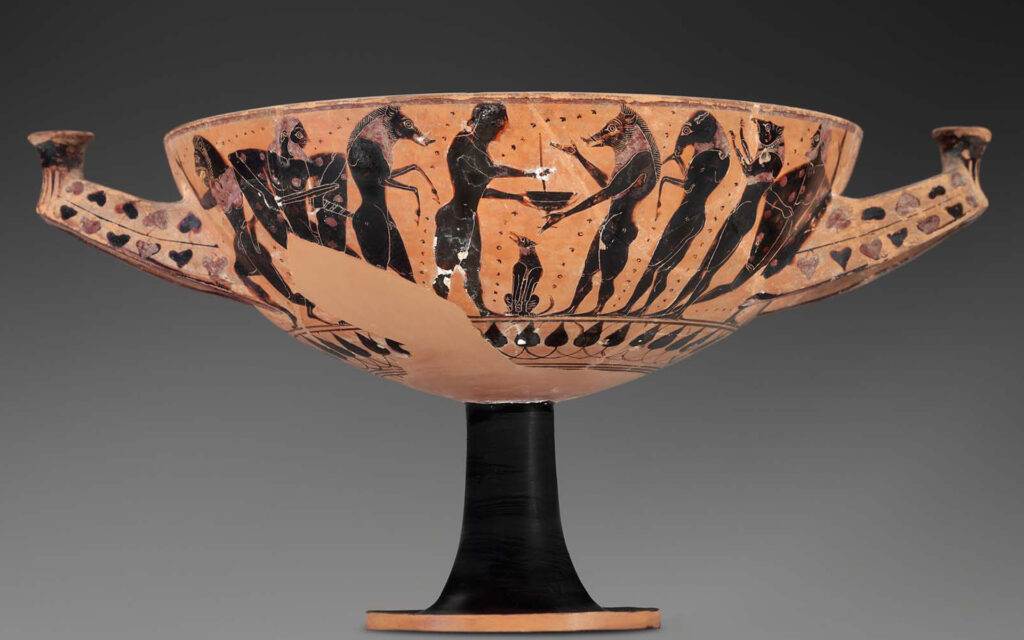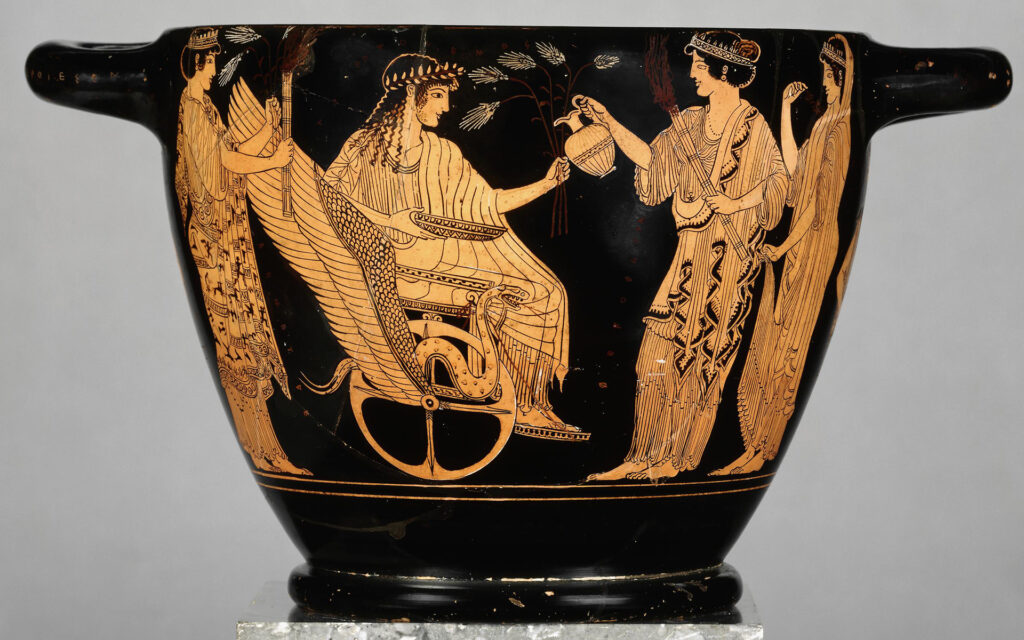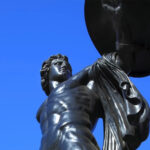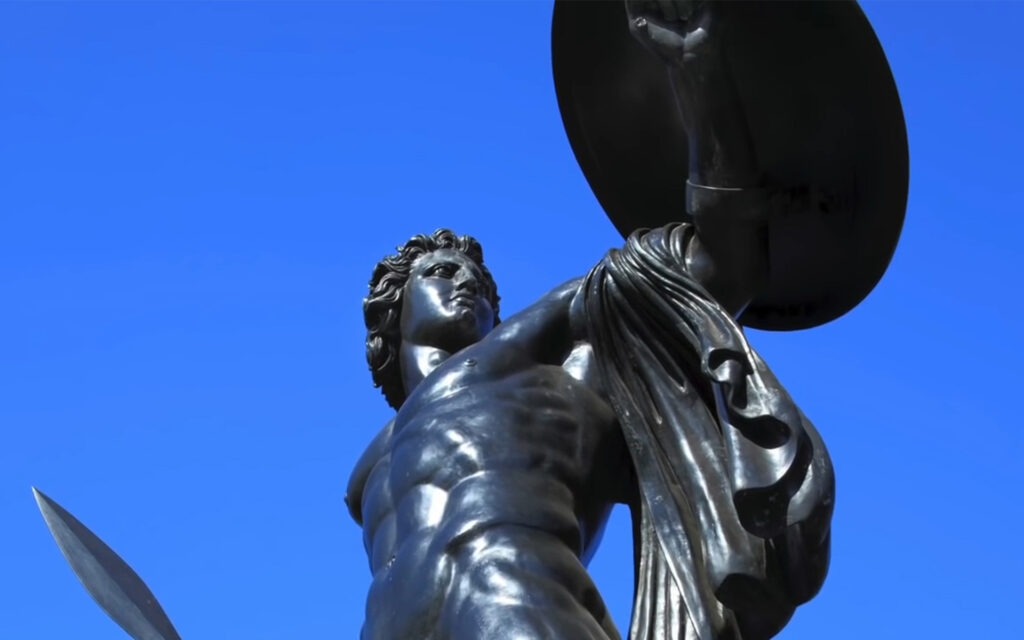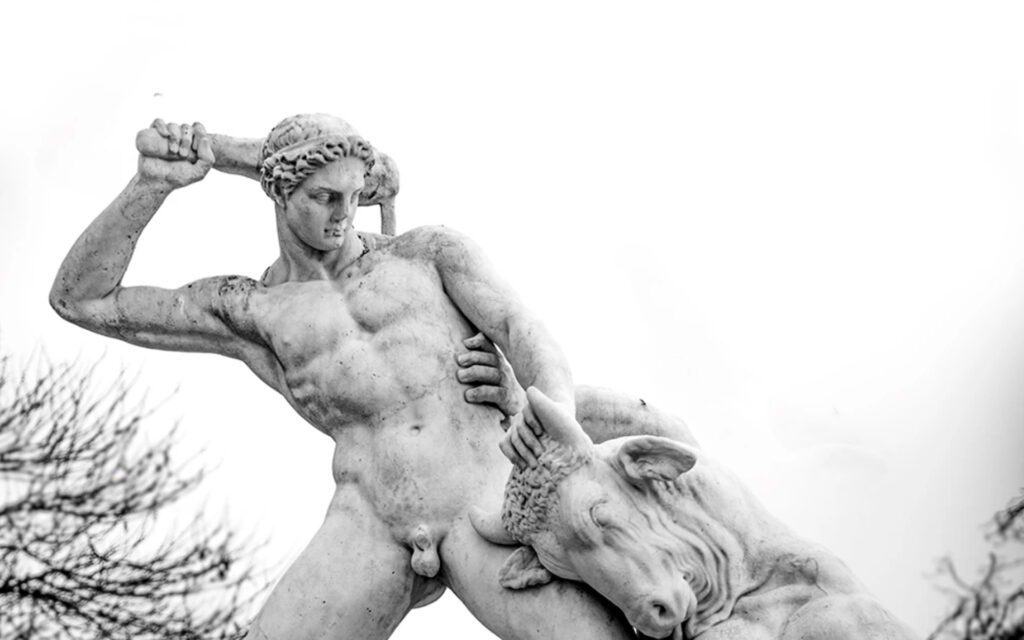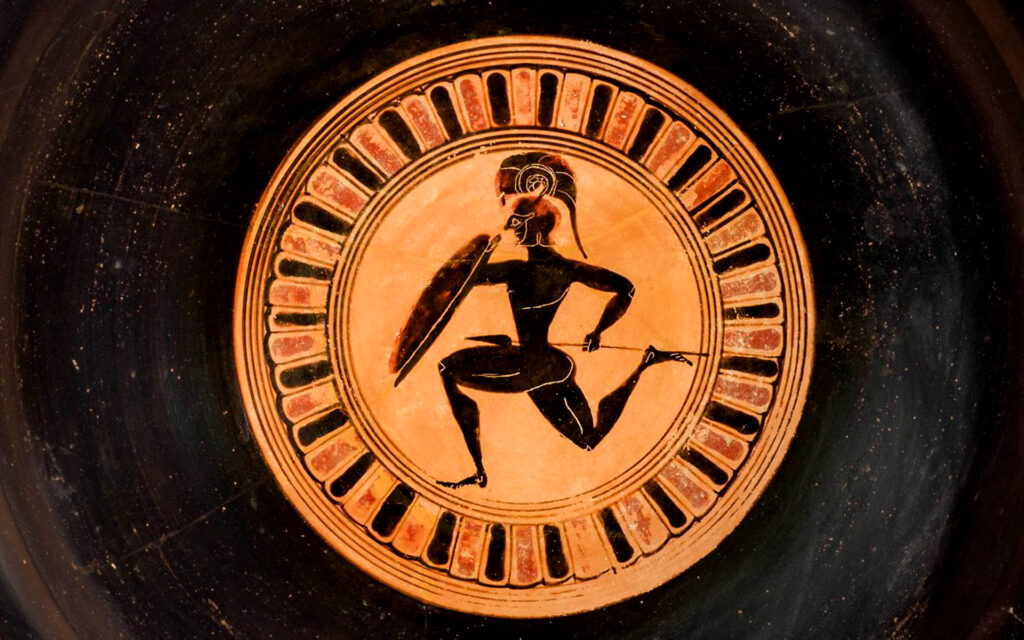Herakles and Kyknos – Apollo’s Wrath
The mythical battle between Herakles and Kyknos pits the forces of Apollonian light against those of Dionysian chaos
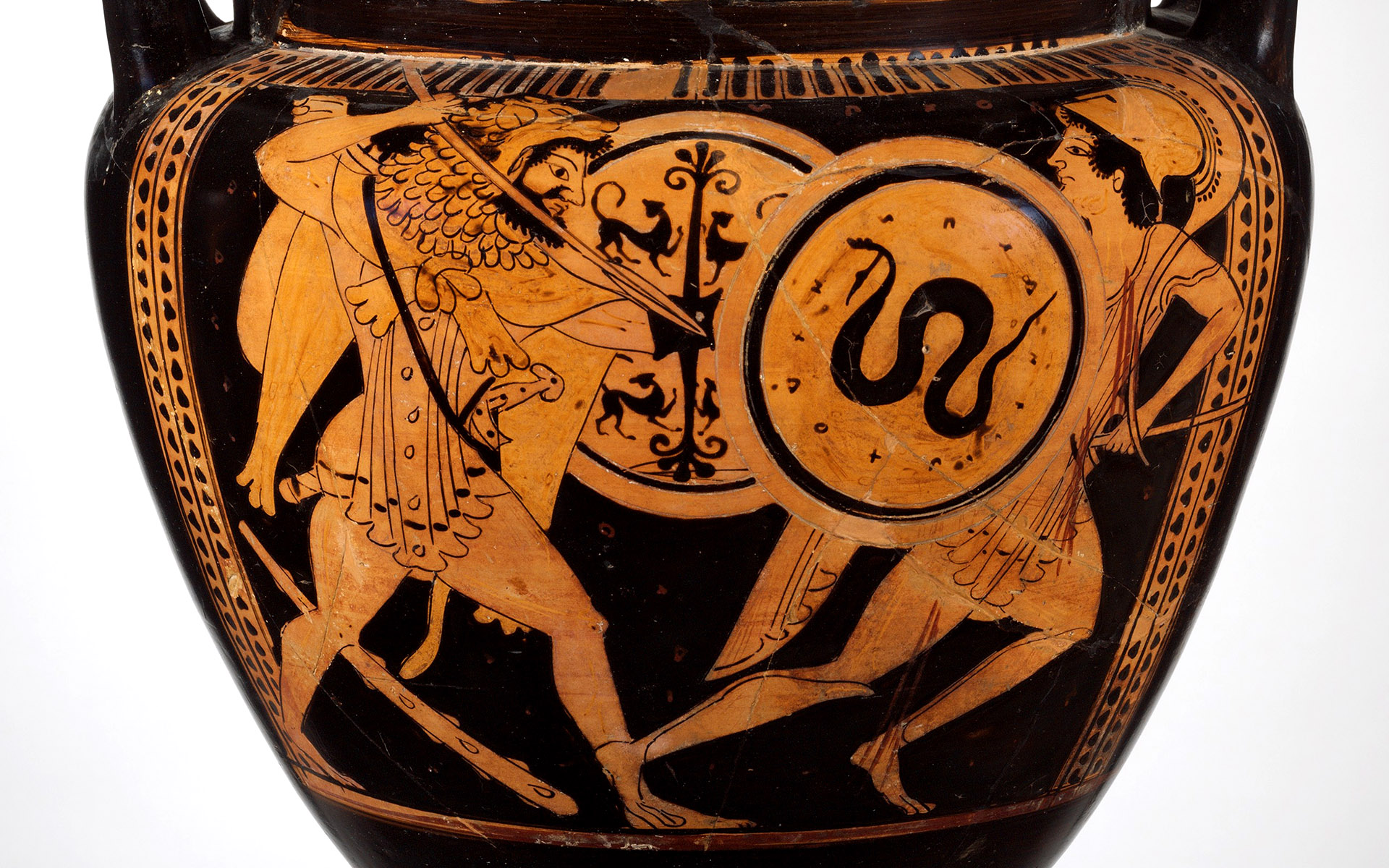
A popular theme in Attic black figure and early red figure vase-painting is the battle between Herakles and Kyknos. The use of the scene is less prevalent after 500 BCE, indicating the ancient myth fell out of favour compared to the more major components of the Herakles mythos. The myth is touched upon by the likes of Pindar, Apollodorus, Hyginus, Pausanias and Diodoros, as well as by Euripides. All of these provide very fragmentary retellings, some based on the lost poem “Kyknos” by Stesichoros from the early 6th century BCE. The fullest account is the Hesiodic poem “The Shield of Herakles.”
The Shield of Herakles
While no longer attributed to Hesiod by many scholars, the Shield of Herakles certainly is in the Hesiodic style. The poem tells of the battle between Herakles and Kyknos near Apollon’s sanctuary at Pegasai in Thessaly, with a lengthy description of the shield of Herakles, much like that of Achilles’ shield in the Iliad. What really draws our attention is the conflict between Dionysian and Apollonian forces, as laid out in Undying Glory: The Solar Path of Greek Heroes.
Herakles and Kyknos
Kyknos, according to Pausanias, was a bloodthirsty rogue who killed all of his houseguests, angering Zeus. Kyknos was the son of the war god Ares and his manner reflected that of the god who personified frenzied bloodlust. Kyknos preyed upon pilgrims to Apollon’s sanctuary at Delphoi, angering the god.
As Herakles and his nephew Iolaos are driving on their chariot to Trachis, they encounter Kyknos and his charioteers, Phobos (Fear) and Deimos (Dread) – divine sons of Ares. The encounter takes place just outside Apollon’s sanctuary in Pegasai, and the Light Bringer riles Herakles up against Kyknos, who eagerly accepts the son of Ares’ challenge to single combat. Pegasai is also the port where Jason built the Argo.
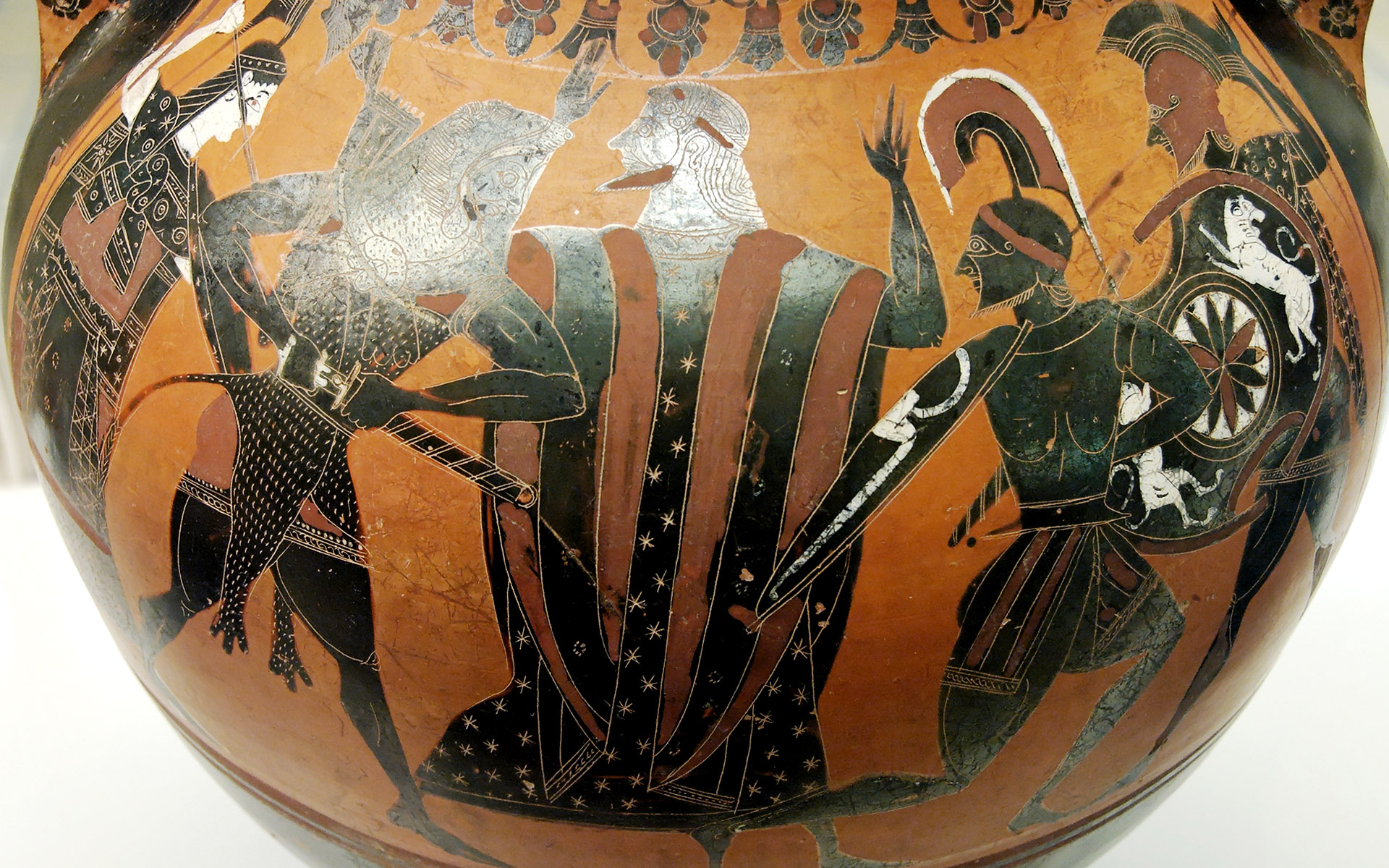
Proxy Battle
Several vases depict the scene with various gods present. Aside from Athena and Ares, Zeus, or his thunderbolt are often portrayed in the middle of the fighters, while Apollo and Dionysos are also found on many of the black figure ceramics. The battle is a proxy fight between Apollo and Dionysos, particularly as one ancient tradition holds that the ecstatic Dionysos sat on the tripod at Delphoi before orderly Apollon, though both share the sanctuary there. It is also a conflict between Athena, the goddess of battle wisdom and Ares, the frenzied god of war.
Before the battle, Athena advises Herakles to be ready for Ares’ attack, should he kill Kyknos, and not to strip his armour until after the threat of the war god’s reprisal has passed. Kyknos is the first to throw his spear, which fails to penetrate the shield of Herakles. After a peal of thunder is sent by Zeus to encourage his son, Herakles thrusts his spear through the throat of Kyknos, killing him in a particularly Homeric manner. Ares, true to form, charges towards Herakles in a rage. Athena attempts to convince him to stop, but the battle frenzy is upon him. He hurls his spear at Herakles, but Athena deflects it from the hero’s shield. Ares draws his sword and leaps at Herakles, who thrusts his spear into the thigh of the war god, who is taken by Phobos and Deimos back to Olympos to recover.
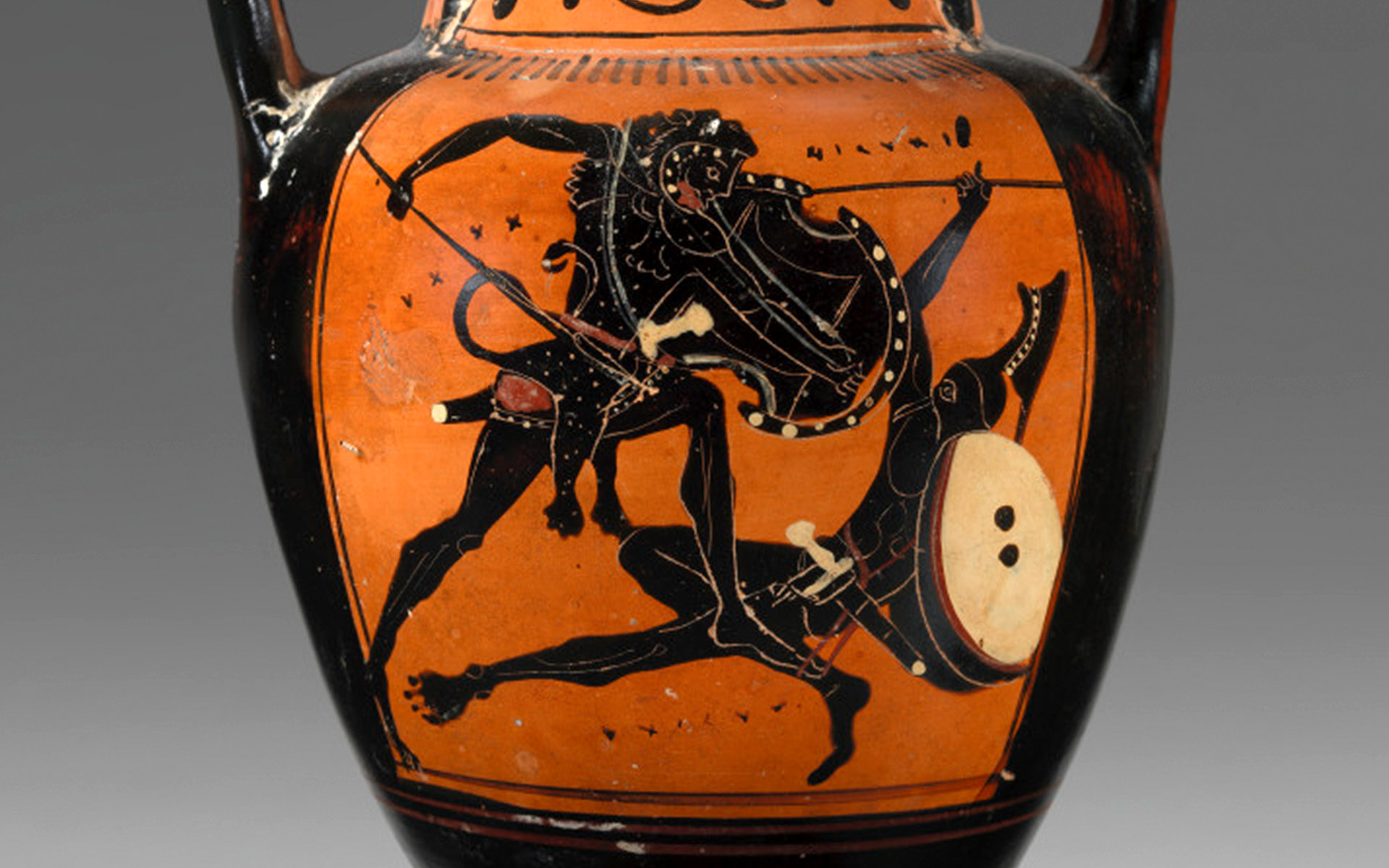
Burial of Kyknos
Herakles strips Kyknos of his armour and leaves the body, which is retrieved by Keux, his father-in-law. Keux buries Kyknos with a royal funeral, but soon after his interment, Apollon makes the Anauros River flood, washing the mound and the body away.
What we see in this story is the continual struggle between Dionysos and Apollon, Ares and Athena. This is seen through the lens of a skirmish between to heroes. Kyknos represents the bloodthirsty, chaotic lunar forces, while Herakles fights on the side of the ordered, controlled solar. The battle between Herakles and Kyknos ultimately sees the solar masculine winning the day.
Herakles is the only hero in Greek mythology to reach the ultimate state of Solar Man, above the gods. To find out more, read Undying Glory: The Solar Path of Greek Heroes.
